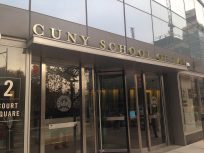
Law@theMargins Associate Editor Shahana Hanif attended the annual Internet Freedom Festival: Joining Forces to Fight Censorship and Surveillance in Valencia, Spain where she spent a week in panel discussions and workshops with digital rights defenders, technologists, community organizers, and others from over 130 countries working to combat online threats to human rights and freedom of expression and create an inclusive, safe, and feminist internet experience. The Internet Freedom community is vast and expanding as our online spaces present newer threats, especially impacting marginalized people worldwide, and parallel to these dangers, the growing powerful, positive, and creative opportunities for communities to occupy the Internet and fight back.
The takeaways and lessons learned presented in this article are being shared with permission. Law@theMargins was interested in documenting the Festival through a series of articles and photos, but correctly, strict codes of conduct were implemented in order to protect participants who rely on privacy-enhancing technology to protect their freedom of expression. Thus, there may be instances where speaker names and/or organizational identities are omitted. These restrictions are important to understand the scope of Internet Freedom. Internet freedom works along a spectrum and does not necessarily entail revealing particular identities, rather, emphasizes the need for continued discourse and ideas to protect those on the Web. A secure web experience requires consent, just like all other interactions.
Law@theMargins is especially interested in voices from the Global South. Keeping this mission in mind, Shahana attended panels to learn about and better understand 1) the impact of government surveillance and increasing fundamentalism in countries like Pakistan, India, and Tibet 2) how to strategize around online gender-based violence in Latin America, and 3) the unique ways in which women, transgender, and queer-identified communities face continued oppression and attack, not limited to online GBV, in getting to the Web and cultivating safe spaces. In the coming weeks we will share a clip featuring #InternetFF activist voices on what internet freedom means to them.
Citizen Journalism
In a panel focusing on forced disappearances of citizen journalists in Pakistan titled Threatened by the State; Disowned by the Community, organizations Media Matters for Democracy and Digital Rights Monitor Pakistan shared their apprehensions about ways in which the Pakistani government and larger journalism community continue to undermine and disregard the assassinations and kidnappings of those practicing journalism on their own. Citizen journalism is defined as an alternative and activist form of news gathering and reporting that functions outside mainstream media institutions, often as a response to shortcomings in the professional journalistic field. As such, those targeted in Pakistan include social media activists invested in creating content pertaining to LGBTQ issues and controversial political stances.
Currently, there are no laws to protect the rights of citizen journalists unlike journalists working in mainstream media who are protected under a judiciary. For example, after the assassination attempt on GEO TV news anchor Hamid Mir, a high level judicial, consisting of reputable judges, was formed to investigate the case. In comparison, at least nine social media activists, suspected to be cases of political abduction, are still missing with no inquiry ordered, no protests, very little media coverage, but no continual actions to locate them. Since 2000, 120 journalists and media workers have died in the line of duty since the year 2000, out of the total 84 were target-killed.
For these digital, freelance journalists who turn to social media to express views or own personal websites to evaluate security policies, there are no mechanisms through the Human Rights Commission of Pakistan or laws in place to protect their freedom of expression. Instead, citizen journalists pose as threats to political parties and are vulnerable enough to be added to the terrorist watchlist for their reporting.
There is a rise of grassroots efforts through secure, encrypted messaging apps to preserve the stories of missing journalists and mobilize a response effort through letters and urgent actions. Further, with the support of Open Society Foundation, editors and directors of leading newspapers and television channels came together and received training to create Editors for Safety. Led by Zafar Abbas, EfS puts onus on all media to diligently highlight attacks on other media organizations and journalists as breaking news.
Hindu Fundamentalism
Hindu Fundamentalism and the Threat to India’s Internet Freedom, a session facilitated by Dalit Muslim and Christian activists, intellectuals, and journalists, highlighted the ways in which surveillance apparatuses are in place to further marginalize and target the poor and the frontline voices of pro-Dalit and/or Dalit identified activists and journalists killed for speaking against Hindutva and their writings against caste.
Currently in India, residents are required to enroll for an Aadhaar card, a 12-digit identification number issued by the Unique Identification Authority of India (UIDAI), otherwise known as “Authority”. Aadhaar is the largest biometric database in the world, meaning it records and verifies every Indian citizen’s details including biometric (fingerprint) and demographic data. While this sounds straightforward and harmless, the problem lies in the State infringing on privacy and holding on to data that can be used to profile and surveil vulnerable communities. In the largest ever survey collection interviewing communities marginalized under caste, indigenous, gender-queer, and trans, 80% reported that they worry about surveillance from government, religious operatives, and political parties. These communities are doubly experiencing digital attacks, making their livelihood more insular both online and offline. 60% survey respondents experienced a digital attack based on their caste, gender, religious, and/or sexual orientation on Facebook which led to job loss, emotional distress, and physical assault.
Like Pakistan, journalists in India have also been targeted for assault and assassination. Gauri Lankesh, an editor-activist, who promoted religious harmony in that State and was actively involved in saving a Sufi shrine in Karnataka visited by Muslim and Hindus, was killed in her own home by motorcycle assailants. Dalit activist Sujatha Surepally has been facing death threats and online harassment. Although Surepally and others targeted by online harassers have filed complaints and reported incidences of attack through Facebook’s reporting tools, the language-inaccessible platform falls short because it fails to understand the ways in which people are being trolled. Perpetrators usually use the Tamil language as a tool to get away with attacks. Although hundreds of activists are contacting Facebook, instead of shifting Facebook reporting filters and shutting down right-wing groups, they’re creating more opportunities for perpetrators to flourish.
Despite the expansion of government surveillance and online trolls, there are growing resistance movements focused on digital and security trainings, digital literacy, and using digital spaces to inform and educate others on what is happening.
Gender Based Violence (GBV)
Preventing online gender-based violence and protecting survivors are additional areas in which feminists, digital rights activists, and technologists are building around. In a discussion titled Strategizing Around Online Gender-based Violence Documentation and Accompaniment Practice, women and queer activists representing groups from Latin America, South Asia, and other parts of the Global South spoke on the need to produce their own tools to assess and understand gender-based aggressions online. Speakers named that there are unique and nuanced typologies of violence, including access, control and manipulation, extortion, harassment, and hate speech, that impact women and other marginalized communities online in the Global South. Already produced terminologies or descriptions in English and/or from the Global North are not replicable. Several Latinx groups created a visual with the support of impacted community to map online GBV highlighting the online harassment subtleties and complexities in which the attacks unfold. This graph shows the intricacies of online GBV and is shared with legislators who are being pushed to enact laws and mechanisms required for change. This tool is also shared with funders who’re supporting groups addressing online GBV to create mechanisms that are not reliant on responses from Facebook or other social media platforms, which often ignore complaints or fail victims with their limited scopes of resolve.

With increasing digital developments worldwide and more communities connecting to the Internet as new users, local and transnational conversations about privacy and threats are vital. Supporting marginalized people access the Internet in the same way as the privileged is also important. At Law at the Margins, we will continue to follow the discourse of Internet Freedom and encourage others to do the same.





I was looking for something like this.I found it quite interesting,
Do you think Hindu Fundamentalism is a threat to internet freedom? I think it’s actually not.
hopefully, you will keep posting such blogs.Keep sharing.Thank you